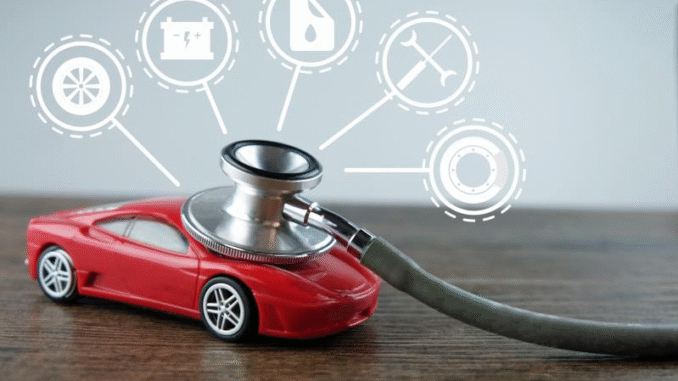
How to Increase Your Car’s Lifespan with Simple Tips
Your car is more than just a way to get from point A to point B—it’s an investment. Whether you drive a brand-new sedan or a reliable old SUV, taking care of your vehicle can significantly extend its life, save you money, and keep you safe on the road.
The good news? You don’t have to be a mechanic to make your car last longer. With just a few simple, practical habits, you can dramatically increase your car’s lifespan and reduce the risk of expensive repairs.
Here’s a comprehensive guide to help you get the most out of your vehicle, mile after mile.
1. Stick to a Regular Maintenance Schedule
Routine maintenance is the foundation of a long-lasting car. Following your manufacturer’s maintenance schedule keeps your car running efficiently and helps catch small issues before they become major problems.
Key tasks include:
- Oil changes every 5,000 to 7,500 miles (or as recommended)
- Fluid checks for coolant, brake fluid, transmission fluid, and power steering
- Filter replacements (air and cabin filters)
- Spark plug inspections
- Battery tests
Pro Tip: Keep a maintenance log or set reminders on your phone to stay on schedule.
2. Check and Maintain Proper Tire Pressure
Driving with under-inflated or over-inflated tires causes uneven wear, decreases fuel efficiency, and puts stress on your suspension system. It can also be dangerous.
What to do:
- Check tire pressure once a month
- Use a digital tire gauge for accuracy
- Inflate tires according to your vehicle’s recommended PSI (usually found on the driver’s door frame)
Bonus Tip: Rotate your tires every 6,000–8,000 miles for even tread wear.
3. Change Your Oil and Oil Filter on Time
Oil is the lifeblood of your engine. It keeps moving parts lubricated, reduces heat, and prevents engine wear. Dirty or old oil loses its effectiveness, leading to increased engine friction and potential damage.
How often?
- Conventional oil: Every 3,000–5,000 miles
- Synthetic oil: Every 7,500–10,000 miles
Always change the oil filter along with the oil to avoid contaminating the fresh oil.
4. Keep It Clean – Inside and Out
Washing your car might seem like a cosmetic task, but it’s also a protective measure. Dirt, road salt, bird droppings, and other contaminants can damage paint and lead to rust.
Cleaning Checklist:
- Wash your car twice a month, especially in winter or coastal areas
- Wax it every 3–6 months to protect the paint
- Clean the interior to prevent mold and wear on upholstery
A clean car isn’t just nice to look at—it stays in better condition longer.
5. Drive Smoothly and Responsibly
Aggressive driving habits like hard braking, rapid acceleration, and sharp turns can take a serious toll on your car’s engine, brakes, and transmission.
Easy changes that make a big difference:
- Accelerate and decelerate smoothly
- Avoid sudden stops and starts
- Don’t overload your vehicle
- Let your car warm up (especially in cold climates)
Driving calmly not only saves fuel but also reduces long-term wear and tear.
6. Don’t Ignore Warning Lights
Dashboard warning lights are your car’s way of telling you something’s wrong. Ignoring them can turn minor issues into major (and expensive) repairs.
Common lights to watch:
- Check engine
- Oil pressure
- Battery alert
- Brake system
If you see a warning light, check your owner’s manual or visit a mechanic immediately.
7. Keep Your Battery in Good Shape
A healthy battery ensures reliable starts and powers all your vehicle’s electronics. Over time, corrosion and wear can reduce its efficiency.
Battery Care Tips:
- Check for corrosion on the terminals and clean as needed
- Test your battery’s charge annually
- Park in a garage or shaded area during extreme weather
- Replace your battery every 3–5 years
If your car is sitting idle for long periods, consider using a battery maintainer or trickle charger.
8. Replace Worn Out Parts Promptly
Driving with worn-out parts can cause a chain reaction of damage. For example, bad brake pads can harm your rotors, and old belts may break and lead to engine overheating.
Keep an eye (and ear) out for:
- Squeaking brakes
- Grinding noises
- Unusual vibrations
- Delayed gear shifts
Regular inspections can help you spot and replace worn parts before they fail.
9. Protect It from the Elements
Weather plays a big role in your car’s longevity. UV rays, snow, ice, and moisture can all do damage over time.
How to protect your car:
- Park in a garage or use a car cover
- Use sunshades to protect the interior from UV damage
- In winter, wash the undercarriage to remove road salt
- Apply protective coatings or ceramic treatments
10. Don’t Overload Your Car
Carrying extra weight puts strain on your engine, brakes, suspension, and tires. It also lowers fuel economy.
Check your car’s gross vehicle weight rating (GVWR) in the manual and avoid exceeding it. Clear out unnecessary items from the trunk and back seat regularly.
11. Use Quality Fuel and Parts
Using cheap fuel or aftermarket parts may save money short-term, but it can shorten your vehicle’s lifespan.
Stick with:
- Top-tier gasoline from trusted stations
- OEM (Original Equipment Manufacturer) parts when replacing anything
- High-quality motor oil suitable for your engine
Avoid filling up right after a fuel truck has delivered gas to a station—it stirs up sediment that can clog your fuel filter.
12. Listen to Your Car
Finally, pay attention to how your car sounds and feels. If something feels “off,” don’t ignore it. Trust your instincts—you know your vehicle best.
Unusual noises, performance changes, or weird smells are often the first signs of trouble.
Final Thoughts
Increasing your car’s lifespan isn’t about complicated repairs or expensive services—it’s about consistency, care, and smart driving. By adopting these simple habits, you’ll not only save thousands in the long run but also ensure that your vehicle stays reliable and safe for years to come.
A well-maintained car rewards you with better fuel economy, fewer breakdowns, and higher resale value. Start small, stay consistent, and treat your car like the valuable asset it is.

